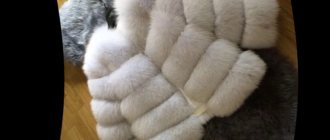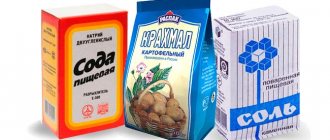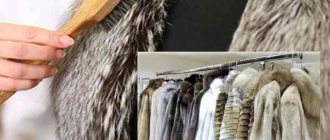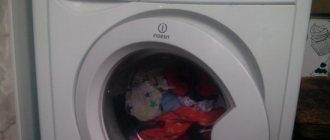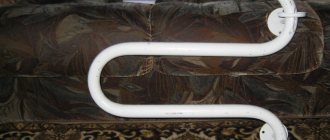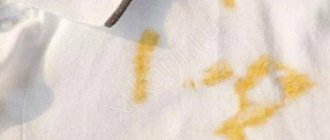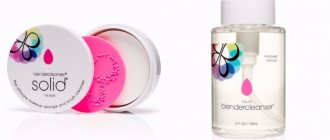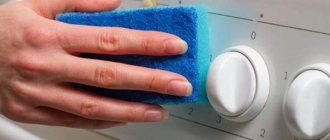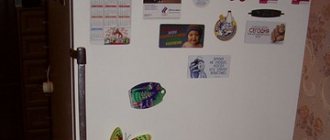Home page » Beauty » Nails
Author of the article
Svetlana Pavlikhina
Reading time: 8 minutes
AA
Mourning stripes under the nails do not make anyone look good. The subungual space needs regular cleansing to keep your hands looking healthy and well-groomed and to protect them from infections. How to remove dirt from under your nails? There are many methods for this, the choice of which depends on the degree of contamination, the length of the plate and the purpose of cleaning.
The importance of nail hygiene
A large amount of dirt, which contains pathogenic microorganisms, accumulates under the nails.
The University of Pennsylvania conducted a study that involved 26 volunteers. When examining the hand, it turned out that there were as many microbes on the tip of one finger as on the entire palm.
Therefore, the area between the skin and the growing nail plate is a habitat and active growth of microbes, which is facilitated by protection from external influences and a warm, moist environment.
The experiment found that hand washing did not reduce the number of bacteria in this area, and artificial manicure increased the number of germs.
Therefore, cleaning this area is a mandatory hygiene measure.
Basic ways to remove dirt under nails
Simple and affordable cleaning methods are carried out using tools and folk recipes are used.
Mechanical methods
To clean dirt under the nail, different tools are used, each of which has its own characteristics:
- The brush is used after washing your hands or taking a bath: the nail plate is treated from the outside and inside (a toothbrush will also do).
- Scissors. You can remove dirt with a sharp tip. To do this, you should choose a well-lit place so as not to injure the skin. Cleaning is carried out on dry hands.
- A scraper is a double-sided metal tool. On one side there is a spatula, on the other there is a hatchet or spear. The instruments are not sharp, so injury is excluded. The scraper is easy to disinfect.
- The cuticle pusher (pusher) has a rounded shape with straight edges.
- A curette is a device for cleaning the subungual space; it has pointed edges of different shapes on the sides.
- Use a toothpick in the same way as an orange stick, but be careful not to damage the skin.
Use of household chemicals
Products used for laundry, hair washing and other purposes:
- A simple cleaning procedure is carried out by rinsing your hands with light natural soap. The detergent should be mild. It is better to purchase a special OrigiNails Bubble White powder, which guarantees cleanliness in 5 minutes.
- Means for treating dentures. It contains citric acid and sodium bicarbonate. To clean, brushes are immersed in the composition to better remove debris.
- Handwash. It’s easy to get rid of stubborn stains under your nails if you wash things by hand. To do this, use soft detergents, for example, washing powder. After work, hands are lubricated with a nourishing moisturizer.
- When washing your hair, due to the foam from the shampoo, everything is washed out on its own.
How to remove dirt from white clothes
Any experienced housewife knows that methods for cleaning stains vary greatly (sometimes dramatically) depending on their origin. If blood, sweat, fruit or berry juice, paint or grease particles have come into contact with a wardrobe item or textile product, cleaning methods will differ. Today’s article will talk about removing a variety of problematic contaminants. We will tell you how to remove dirt from colored clothes and white things. The basic rule is to clean the stains fresh. Try to get rid of any dirt that has appeared as quickly as possible so as not to waste time looking for ways to clean up various old traces. Be aware: pre-soaking is not always a necessary step.
We wash white clothes from various contaminants
Blood prints cause a lot of problems. Before washing, rinse it off under low-temperature running water, then place the contaminated item in a soapy solution. You can get rid of dried blood by treating it with ammonia and then washing it. Fruit and berry juice washes well the mixture, the components of which are vodka and lemon juice. We leave the composition on the dirty surface, then rinse and wash with a high-quality powder that can fight difficult stains. To remove fat from white fabric, first sprinkle starch around the greasy mark to prevent streaks from appearing. Apply turpentine to the problem area, then wash the product as usual. It’s easy to get rid of a fresh greasy mark if you sprinkle talc on top, line it with paper and run it with a heated iron.
When you need to restore freshness to greasy collars and cuffs, ammonia will help out. If you add glycerin and water to it, you will be able to get rid of coffee, chocolate and milk traces. The composition is applied to the soiled area, after an hour the clothes are rinsed and washed. To get rid of yellow sweat marks located in the armpits, an aqueous solution of ammonia (1 teaspoon per 1 liter of liquid) will help. After soaking the item in this mixture, simply wash it as usual. To remove paint, it is better to use a stain remover. Enamel or other paint based on varnish will come off if kerosene or gasoline is applied to the fabric before wet cleaning. Afterwards, all that remains is to water the “disaster site” with stain remover or dishwashing liquid and put it in the washing machine.
Secrets of dirt removal
In order not to rack your brains over how to remove dirt from white clothes, use a proven, high-quality stain remover - this is the most effective and modern way to achieve cleanliness. The composition is often poured directly onto the dirt or added to the appropriate compartment of the washing machine. Many people praise powders that have optical brighteners among their components. They create a visual whiteness effect that is difficult to achieve using other household chemicals. Some housewives despair when they notice that the washed laundry retains traces of contamination. This sometimes happens if the pollution is quite strong. Just wash the item again or use a stronger detergent.
For wet cleaning to take place correctly and painlessly, you need to follow a few simple rules. Try not to let contaminated items accumulate for weeks - the sooner you start washing, the greater the likelihood of a successful result. Try to use soft water. To find out if the water is soft enough, do a little test. Add a small amount of grated soap to a container of hot water. The test is passed if after some time the suspension becomes transparent and does not become covered with a film. You can increase softness by using baking soda.
Important Tips for Cleaning Mud
To make stains easier to wash off, take a basin and pre-soak the soiled items. Don't forget to add washing powder when soaking. The time depends on the intensity of the contamination, so see for yourself: leave the laundry in the basin for an hour or the whole night. To effectively clean handkerchiefs, we recommend soaking them in a strong saline solution. We keep colored items in a basin for no more than three hours, and the water should be at a low temperature. When washing, it is not necessary to use store-bought washing powder - you can prepare it yourself by mixing soda, soap and borax.
Soda ash is perfect for cleaning linen and cotton, thanks to which a product made of natural fabric looks snow-white. It can be used in an automatic machine by pouring it into a drum. When choosing a mode, set the temperature regulator to a value of no more than 70 degrees. Important: this product is not suitable for silk and wool; the material becomes hard and brittle. Before you start wet cleaning heavily soiled items, you can use mustard paste to apply the stains and then put the item in the machine wash.
washable.ru
How to cleanse using traditional methods
Folk recipes include remedies that are always on hand. They are safe and do the job perfectly.
Cleansing baths
Make a soap solution with warm water. Immerse your fingertip for 3 minutes. During the procedure, the dirt gets wet and is easily removed.
Peroxide
Prepare a solution based on hydrogen peroxide: 2 tbsp. l bring water to a boil, add 3 tbsp. l, dishwashing gel, pour in 100 ml of peroxide, 20 ml of ammonia.
After the mixture has cooled, carry out the procedure for 10 minutes.
Baking soda
An effective way to remove soil from under your nails is baking soda. There are 2 methods of using sodium bicarbonate.
Method 1
The product is prepared as follows:
- Heat whole milk (250 ml).
- Grate laundry soap and add 3 tbsp to milk. l.
- Add 1 cup boiling water, 1 tbsp. l. soda
- Pour the liquid into a container, immerse your hands in it for a quarter of an hour.
Method 2
Add 1 tsp to warm water. baking soda, dip your fingertips into the solution for 5 minutes.
Salt baths
Used in case of skin injuries. Dissolve a handful of sea salt in warm water, then hold your fingers in the container for 15 minutes. During the procedure, the dirt softens and inflammation decreases.
Sugar solution
A simple, effective remedy will help you get your nails in order at home.
To prepare it, mix liquid soap, milk, sugar in a ratio of 1:1:1. Soak your fingertips for 15-20 minutes.
After the procedure, dirt is easily removed.
Fermented milk baths
Whey and curdled milk contain acid, which helps remove impurities. Heat the liquid to a comfortable temperature and hold your hands in it (10-15 minutes). The advantage of the method is its absolute safety.
Potato starch
Effectively cleanses and whitens.
- Take 1 liter of water.
- Add 1 tbsp to it. l starch.
- Heat the solution to a boil and cool.
- Place your hands in the mixture for 15 minutes.
Traditional methods at home
Knowing the properties of household products, you can try to remove stains with their help.
Common spots
Contaminants that can be easily removed within an hour and more difficult as they dry:
- dirt;
- water-soluble paints;
- tea;
- milk;
- ice cream;
- eggs;
- sweat;
- urine.
Having salt, vinegar, soda, laundry soap, and pharmaceutical products on hand can help solve the problem of stubborn stains on clothes, furniture, car upholstery, and bed linen.
Laundry soap
Laundry soap has a good effect when washing dried clay, watercolors, gouache, ice cream and milk. To do this, apply soap gel to a well-moistened cloth. After 20 minutes, rinse in warm water.
Aspirin and hydrogen peroxide
To wash dirty children's clothes, add aspirin or hydrogen peroxide to the soap solution. With their help, green marks on trousers and jackets are washed off. 2 tablets or 2 teaspoons of preparations are dissolved in 0.5 liters of soap concentrate.
Salt and soda
A mixture of salt and soda will help get rid of stubborn sweat. Ingredients of homemade stain remover: 1 teaspoon each of salt and soda, 1 tablespoon of dishwashing detergent. The product is applied to the moistened stain for 20 minutes, then rinsed in warm water.
Table vinegar
Acetic acid is useful in the household not only as a food ingredient, but also as an effective stain remover:
- To remove tea - an aqueous solution of vinegar (1:1).
- A 1:10 vinegar solution removes stubborn urine stains.
- A slightly acidic solution removes egg marks on fabric.
After soaking, the items are rinsed in warm water.
From coffee
Coffee contains tannins that quickly penetrate fabric fibers. A combination of 2 ingredients is used to erase coffee traces.
Salt and glycerin
Salt and glycerin are mixed to form a paste and applied in a thick layer to the coffee stain. Cover the top with film and leave for 10 minutes. Rub the mixture into a cloth with your hands and rinse with warm water. Repeat the manipulation. After 20 minutes, the product is washed by hand or in a washing machine.
See also
Rules and review of the best means to remove apricot from clothes
Ammonia
The stain remover is suitable for all types of fabrics.
It includes:
- 1.5 cups boiling water;
- 0.4 cups of ammonia;
- 0.25 soap bar crushed on a coarse grater.
The resulting mixture is kept for 10 minutes under the lid, then applied with a soft cloth or sponge to the contaminated area and wiped. Wash off with warm water and repeat the procedure 2 times. After which, without rinsing off the soap-ammonia solution, wash it manually or by machine.
Powder
Bleach is prepared from washing powder, which includes soda, 6% vinegar and cold water.
Component ratio (parts):
- powder – 3;
- soda – 1;
- vinegar – 1;
- water – 1.
The resulting paste is applied in a thick layer to the stain and left for 5 minutes. Then rub the mixture into a cloth and rinse off. Rinse and wash with cool water.
Alcohol with water
The method is used to clean white, light-colored fabrics. Use 70% ethyl alcohol, chilled water. The edges of the stain are moistened with ice water, alcohol is applied to the outside and inside of the fabric. Cover tightly with film on both sides for 10 minutes. Then washed in warm water.
From the grass
Traces of grass do not need to be erased without first removing them if several weeks or months have passed since they appeared. If home remedies are not effective, you will have to use professional bleaches.
Hydrogen peroxide
Dilute 25 milliliters of hydrogen peroxide in a glass of warm water. Wipe the stained area with a cotton swab until it becomes dull. Wash with laundry soap and hot water.
Ammonia
Ammonia is taken pure or diluted with water 50x50, depending on the type of fabric. Denim fabric is treated with undiluted ammonia, silk fabric with a diluted solution. A cotton pad is soaked in liquid and rubbed until the greenery disappears, after which the item is washed in hot water with powder.
Resin
Tar stains are very sticky. When removing them, you must be careful not to stain other things. Freezing in the refrigerator will make the layer of resin on clothing thinner: it can be removed with a knife and crumbled.
Oil
Vegetable oil must be carefully applied on top of the resin, preventing the fat from spreading. After 30 minutes, remove the softened resin with a paper towel and wipe with alcohol.
Petrol
Soak a cotton swab in gasoline and place it on the resin for 20 minutes. Blot the resin and wipe with alcohol.
Rust
Washing will make the rust stains even more permanent. Pre-treatment of products is required.
Ammonia solution
To clean things from iron hydroxide, use a 10% ammonia solution (ammonia). Add 2 teaspoons of ammonia water to a glass of water and soak the stain for 5-7 minutes. Rinse in cool water.
Lemon juice
Squeeze the juice from the lemon and soak the rust on the fabric. Iron the area through a paper towel with a hot iron until the rust marks disappear. The method is suitable for all types of fabrics.
See also
How to quickly remove chocolate from clothes at home, remedies and simple methods
Turpentine
Moisten the rust with turpentine and sprinkle with talc/starch, cover with a sheet of paper. After 20 minutes, iron through a sheet of paper with a hot iron until the stains disappear.
Dye
Stains can be from oil, latex, or acrylic paint. Each tissue has its own removal method.
Turpentine
On dense fabrics, turpentine is used as a solvent. Soak the stained area with a moistened cotton pad.
After a few minutes, remove the paint, constantly changing the cotton swab.
Sunflower oil
On delicate fabrics, oil stains are treated with vegetable oil. After the paint layer has softened, wash it off with dishwashing detergent.
Juices
You can remove traces of berries and juice from clothes using laundry soap or washing powder. Prepare a soap solution and soak things for 2-3 hours. Wash by hand.
Deodorant
You can remove deodorant from clothes using salt or vinegar. The wet spot is sprinkled with salt and left overnight. In the morning, wipe with dry salt and wash. Only colored and plain fabrics are treated with vinegar. Stained areas are treated with acid. In the morning, things are washed as usual.
Red wine
On cotton fabrics, use a soda solution (50 grams per 1 liter of water). Stains on woolen products are soaked in milk. For silk and synthetic products, prepare a glycerin-ammonia mixture (3:1). After soaking, items are washed in warm water.
Lipstick
Lipstick stains can be removed using ammonia. They are wiped until removed, after which the item is rinsed or washed.
Fat
Old greasy stains are removed in stages:
- things are soaked in a solution of dishwashing detergent;
- stains are treated with white spirit;
- sprinkle with talc or starch on top;
- rub over the stain with a toothbrush.
The item is washed in warm water and laundry soap.
Tobacco
There are two ways to get rid of tobacco traces:
- Process with raw egg yolk. Rinse with alcohol and hot water. Wipe with heated glycerin, wash with soap.
- For white fabrics, use a mixture of ammonia, ethyl alcohol, and 3% hydrogen peroxide. The ratio of components is 2:4:13. Then rinse, dry, sprinkle with talcum powder.
Yellow-brown spots with a clear outline and a characteristic odor will disappear.
Chocolate
Traces of chocolate are removed using glycerin heated to 40 degrees. Use a cotton swab to wipe the contaminated area. Another cleaning method is to use gasoline, followed by a solution of ammonia.
Glue
White spirit is used to remove adhesive traces. Wipe the stain, then rinse in warm water.
Iodine
Iodine stains are removed using starch: the moistened stain is rubbed until it disappears.
Zelenka
You can remove the stain using hydrogen peroxide or ethyl alcohol. The treated stain is left for 15 minutes and then washed.
Ink
Ink stains on clothes can only be removed with fresh ones using folk remedies.
Berries and fruits
After several weeks, fruit and berry splashes are removed using whey (for white fabrics), a mixture of protein and glycerin (for silk and wool), and white spirit (for natural, dense fabrics). The products are applied for 2-3 hours, after which they are rinsed and washed.
See also
15 best ways to remove gum from hair at home
Cosmetics
Blush, mascara, and nail polish can leave stains on clothes. Each case requires its own method:
- Blush and self-tanner are removed:
- detergents;
- hairspray;
- soda with lemon juice;
- 3% hydrogen peroxide.
- Mascara and eyeliner are removed with makeup remover.
- Nail polish that gets on clothes is removed with tape.
- Hair dye can be removed with a mixture of equal parts of ammonia and hydrogen peroxide.
The hardest thing to get rid of is hair dye stains.
Unknown origin
If it is impossible to determine the nature of the contamination, use either a mixture of soda and vinegar, or a cocktail of ammonia, ethyl alcohol, borax, laundry soap and water.
The stain is treated and left for an hour, after which it is rinsed and washed.
Deep cleaning
Heavy stains can be easily and quickly removed using simple methods.
Fruit juices
Citrus fruits help clean your nails. Any sour fruit, such as lemon, will do:
- Squeeze juice from 1 fruit.
- Apply to desired area.
- After 10-15 minutes, wash your hands.
If the frozen stain is located deep under the nail, then you need to cut the lemon in half and immerse your fingertips in the pulp (hold for no more than 15 minutes).
After the acid, be sure to apply cream or vitamin E with vegetable oil to the skin of your hands.
orange stick
This is a wooden product in which one end is pointed and the other is cut at an angle. A stick is convenient for scraping out particles in narrow places.
The material has disinfecting properties, and cleansing occurs more delicately than with a metal object.
Method of action:
- Insert the tool into the free space under the nail (it is important not to move the skin).
- Draw the tip from one edge to the other.
- Remove dirt.
- If necessary, repeat the procedure.
Tough stains
If untidy marks on clothes are discovered late, it will be much more difficult to wash them and you will have to put in more effort. Such contaminants are called difficult to remove. Sometimes you have to use strong bleaches to eliminate them, and in some cases only proven folk remedies help, because you don’t want to throw away your favorite things.
There are several types of stains that are very difficult to wash off. This category includes stains from:
- sweat;
- food;
- herbs;
- cosmetics;
- paints;
- blood.
Difficult to remove food stains can be divided into several categories. These are untidy blots from vegetables or fruits, drinks, fatty meat dishes. This also includes any derivative products:
- coffee;
- wine;
- sauce;
- jam;
- ketchup;
- jam;
- juice.
Food stains are easily removed at the very beginning. The more time passes from the moment they appear, the more difficult it will be to clean things up. Before choosing a method to eliminate the problem, you need to determine the type of fabric, the type of stain and the period during which the stains remained on the clothing. After studying the product label, it will be clear what types of processing are acceptable.
The fastest ways
If your nails do not need deep cleaning or the time for the procedure is limited, use express methods:
- Drop hydrogen peroxide directly under the plate, after a few minutes, rinse off the preparation, and remove any remaining debris.
- Citric acid has the same properties as fruit, but is more concentrated, so it acts quickly and aggressively. Follow this order:
- Heat 150 ml of water until warm;
- add a 25 g packet of acid;
- Immerse your fingers in a bowl of liquid for 10 minutes.
It removes dirt well on your hands too.
Cleaning dirt under nails after gardening
It will not be possible to remove soil from under your nails with regular washing; it gets clogged too deep. This will require more intensive methods.
Soap bath with soda
- Dissolve soap and 1 tbsp in a small amount of water. l. soda
- Place the brushes in the bath for 15 minutes.
- After the procedure, use any manicure tool.
Lemon acid
- Pour boiling water over the powder.
- Cool the solution to a comfortable temperature, drop it onto the contaminated areas using a pipette or blot with a sponge.
Vegetable solution
Sorrel will help cleanse dirt:
- Grind the plant.
- Dip your fingers into the mixture.
Mashed potatoes are used in the same way.
After contact with the ground, the skin is injured, so using a brush is not recommended.
How to clean a refrigerator and get rid of an unpleasant odor
If frozen fat drops from sour cream, mayonnaise, or milk appear in the refrigerator, it can be difficult to wash them off. In addition, every housewife has more than once encountered the fact that a persistent unpleasant odor appears in the refrigerator. And washing doesn’t always help. What to do in such cases? We will need:
- soda - 2 tablespoons
- water - 1 liter
- Dissolve baking soda in water and wipe all the walls and shelves of your refrigerator with this solution. Then rinse with clean water and wipe with a clean cloth.
- To get rid of unpleasant odor, place in the refrigerator.
- a piece of black bread
- lemon slices
- soda in a cup
- water with lemon juice
- Activated carbon
It's that simple, and also quick and easy!
What to do to prevent your nails from getting dirty
To prevent dirt from getting under the nails, different methods of protection are used during gardening work or contact with the ground:
- Gloves. Latex products are suitable for working in the garden.
- An old proven method is soap. Scrape along it until the space under your nails is completely filled. If the surface is hard, moisten with water. A protective crust is formed, which is then easily washed off.
- Special liquid gloves protect against contamination. The product is applied generously and left until completely dry. A protective film is formed on the skin, preventing particles from entering. By analogy, liquid soap is used instead of expensive store-bought gloves.
- To prevent dirt from getting in, apply silicone cream to your hands before work.
Basic Rules
The first and basic rule to remember is that almost all types of stains are easier to remove while they are fresh. In the first 30-120 minutes, it is enough to spill or wash the stain with water or a damp cloth.
However, there are exceptions. So, it is better not to try to clean fresh dirt and drops from a melted candle, so as not to smear them. In the first case, you need to let the clothes dry and brush off the dirt with a brush. In the second, try to apply low temperature to the soiled items; the wax will harden, become brittle and be easily removed.
The next important point: before removing a stain from clothing, you need to make sure that the stain remover is safe for the material. To do this, apply a drop of the product to the hem of the bottom or in another inconspicuous place. If the tissue does not change, then the product can be used.
What will “kill” different types of fabrics?
Before washing, it is important to study the composition of the material given on the product label. There are also rules of care that cannot be violated. For example, if a product can be washed at 30 degrees, then you should not try to remove the stain by pouring boiling water on it.
If there is a symbol on the label that says the product cannot be washed, then it is better to take it to the dry cleaner without trying to remove the stain at home.
Need to remember:
- It is prohibited to clean synthetic fabrics with organic solvents;
- artificial silk will be destroyed by acids, solvents, and hydrogen peroxide;
- dyed fabrics are likely to become discolored when treated with hydroperite solution or chlorine bleach;
- Eco-leather cannot be treated with organic solvents.
You need to handle silk, lace and wool items very carefully.
Procedure
It is not recommended to use concentrated products to remove stains; it is better to dilute them with water. A substance that is too aggressive will negatively affect the fabric. If the trace is not cleared on the first try, the processing can be repeated.
To remove a stain you need to:
- turn the thing inside out;
- straighten it by placing a white cotton cloth folded several times on the front side under the stained area;
- aggressive stain remover should not be poured onto the fabric; you should moisten the swab and carefully treat the stains;
- you need to move strictly from the edges to the center, otherwise the mark will only increase in diameter;
- and to prevent a dirty halo from appearing on your clothes from smeared stain remover, you should sprinkle starch, talc around the perimeter, or at least moisten it with water;
- If hard brushing is required, it is better to use an old toothbrush.
Work should be carried out in a well-ventilated area, preferably in bright sunlight.
How to clean your toenails
Feet in the warm season, and especially after gardening, get very dirty. It is recommended to use several effective methods that will help wash not only the subungual space, but also the feet.
First way
- Heat 3 liters of water.
- Add 20 ml of liquid soap, soda, sea salt, essential oil (2:1:1) to the liquid.
- Lower your legs and hold until the solution cools.
Second way
Chamomile relieves inflammation and soothes irritation on the legs:
- Boil 2 liters of water.
- Brew 2 bags of chamomile, add a little potassium permanganate to disinfect and disinfect the extremities.
- When the infusion has cooled to a comfortable temperature, dissolve 15 ml of soap.
- Dip your feet into the liquid.
General Tips
For housewives, the question of how to remove dirt stains is one of the most pressing. In fact, there are a lot of ways. Each woman chooses what she considers the most effective and suitable:
- You can add a few spoons of the following mixture to the washing powder: grated soap, borax and soda in a ratio of 2:1:1. You can mix the ingredients in advance and store the product in a jar or well-closed box and use it as needed. Some housewives use it instead of powder.
- You can add 100 ml of wine vinegar to the rinse water. It will wash the soap and also act as a fabric softener: it will make it soft.
- Clothing made from natural fabrics (cotton and linen) can be washed well using soda ash. When machine washing, it must be added directly to the drum. Items should be washed at a temperature no higher than 70 degrees. It is not recommended to wash silk and wool with soda, as the material becomes hard.
- A small amount of potassium permanganate is diluted in hot water (10 l) so that the liquid becomes slightly pink. Then add 200 ml of soap solution there. Place washed laundry into the mixture and leave it overnight. Then the things are rinsed well.
- You can add citric acid to light-colored items when machine washing; it has a bleaching effect. A packet of dry yeast has a similar effect.
- You can add a little baking soda to the drum. This will soften the water and make the laundry much cleaner.
- Hold contaminated clothing over boiling water with lemon juice.
Precautionary measures
Simple rules that must be followed in order to prevent finger injuries:
- When cleaning and trimming your nails, you should not cut them too short, as this can lead to wounds and increases the risk of infection.
- Any tool requires caution, especially sharp ones.
- When using chemicals and herbal products, avoid contact of the substances with the skin itself.
- After each use, it is necessary to disinfect the tool, especially if several people use it.
- The procedure time should not exceed 15 minutes.
When to cut your nails
A healthy nail grows 2-4 mm in a month, so you need to shorten it every week.
When there is a danger of contracting infectious diseases, it is better to cut the stratum corneum short.
This is why school canteen workers are prohibited from applying or using varnish.
According to sanitary standards, doctors are also not allowed to have long, artificial or painted nails.
Girls should not have a manicure that is too short, as the finger will widen and look rough.
According to the lunar calendar, it is better to cut the plates on the new moon or on the waxing moon. Many girls claim that long nails are less susceptible to contamination.

